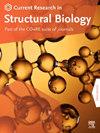Expose flexible conformations for intrinsically disordered protein
IF 2.7
Q3 BIOCHEMISTRY & MOLECULAR BIOLOGY
引用次数: 0
Abstract
The folding conformation of native protein has flexibility in different degrees, which may bring difficulty in presenting the structures, and also it causes complexity in understanding the relationship between structure and functions. Although many methods and databases provide information for intrinsically disordered protein (IDP), they are mainly limited to determining the intrinsically disordered regions (IDR) lacking knowledge of possible folding patterns. To overcome the barrier, the protein structure fingerprint technology has been developed, which includes PFSC (Protein Folding Shape Code) (Yang, 2008) and PFVM (Protein Folding Variation Matrix) (Yang et al., 2022) algorithms as well as FiveFold (Yang et al., 2025) approach for protein structure prediction, which are able explicitly to expose the possible conformational structures for intrinsically disordered protein. Three proteins, human cellular tumor antigen P53, human alpha-synuclein, and human protamine-2, are taken as samples for demonstration of how to obtain their folding conformation structures for intrinsically disordered proteins. The folding features for intrinsically disordered proteins with given structures may be revealed by the alignment of PFSC strings, and the folding possibility for intrinsically disordered proteins without a given structure can be exhibited by the local folding variations in PFVM. Furthermore, the multiple conformational 3D structures for intrinsically disordered protein can be predicted by FiveFold approach, which provides a significant tool further to understand the intrinsic disorder of proteins.

揭示内在无序蛋白质的柔性构象
天然蛋白的折叠构象具有不同程度的柔性,这给结构的呈现带来了困难,也给理解结构与功能的关系带来了复杂性。虽然许多方法和数据库提供了内在无序蛋白(IDP)的信息,但它们主要局限于确定内在无序区(IDR),缺乏对可能折叠模式的了解。为了克服这一障碍,已经开发了蛋白质结构指纹技术,其中包括PFSC(蛋白质折叠形状代码)(Yang, 2008)和PFVM(蛋白质折叠变异矩阵)(Yang等人,2022)算法以及用于蛋白质结构预测的FiveFold (Yang等人,2025)方法,这些方法能够明确地揭示内在无序蛋白质的可能构象结构。以人细胞肿瘤抗原P53、人α -突触核蛋白和人蛋白蛋白-2三种蛋白为样本,演示如何获得其内在无序蛋白的折叠构象结构。具有给定结构的内在无序蛋白的折叠特征可以通过PFSC弦的排列来揭示,而非给定结构的内在无序蛋白的折叠可能性可以通过PFVM的局部折叠变化来展示。此外,利用five - fold方法可以预测内在无序蛋白质的多构象三维结构,为进一步了解蛋白质的内在无序提供了重要的工具。
本文章由计算机程序翻译,如有差异,请以英文原文为准。
求助全文
约1分钟内获得全文
求助全文

 求助内容:
求助内容: 应助结果提醒方式:
应助结果提醒方式:


